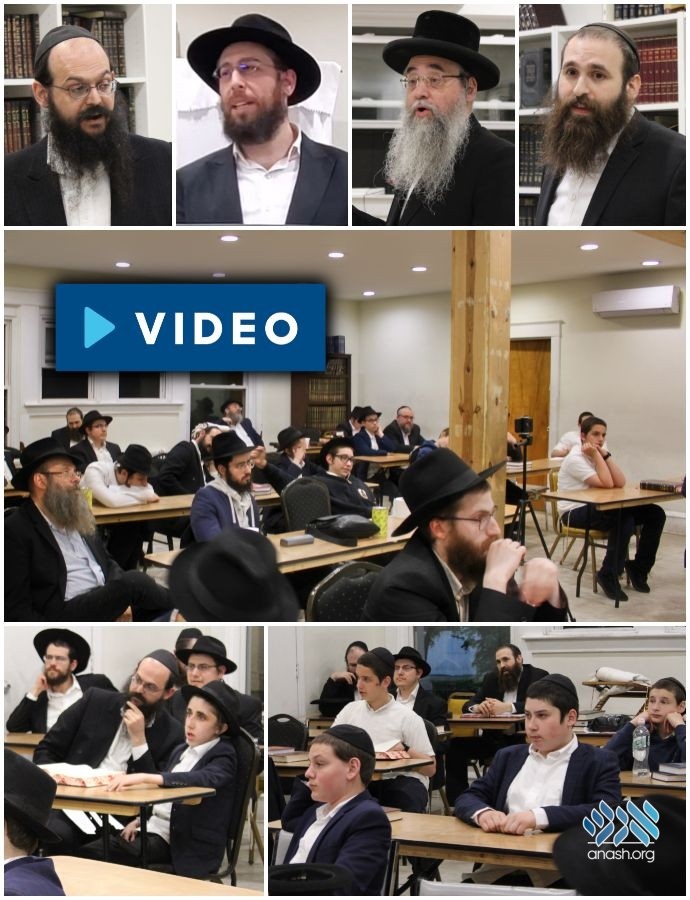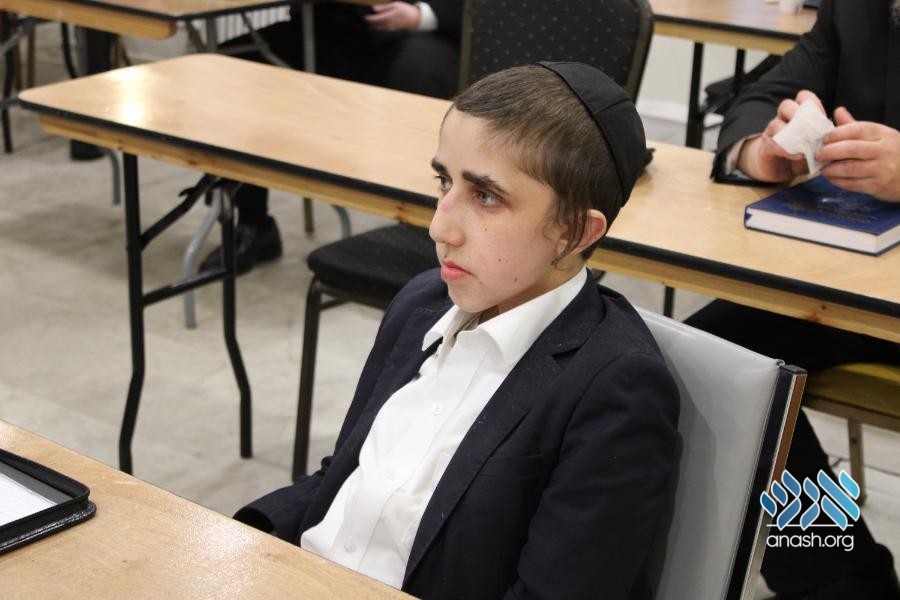At the tri-annual Kinus Torah held at the Kingston Mesivta, speakers addressed interesting and relevant halachic topics, including the Alter Rebbe’s view on an Eruv in New York and acapella music during sefira.
At the tri-annual Kinus Torah held at the Kingston Mesivta, speakers addressed interesting and relevant halachic topics, including the Alter Rebbe’s view on an Eruv in New York and acapella music during sefira.
The Kinus Torah, which is held at the Rebbe’s instruction around each yom tov, is attended by the bochurim at the mesivta, as well as numerous members of Kingston Anash. The event is led by Mesivta Rosh Yeshiva Rabbi Shimon Hellinger.
The first speaker, Rabbi Menachem Aizenman, who teaches at the Mesivta, spoke about the critical topic of how 600,000 people are calculated according to the Alter Rebbe. This question is central to the discussion of making an eruv, since a pole-and-string eruv cannot be made in a real reshus horabim. Rabbi Aizenman explained the question clearly and went on to prove from the Alter Rebbe’s words that they need not all be on one street and passersby in all the city streets combine to make up the requisite 600,000.
Harav Gedalya Oberlander, rov of Anash in Kingston, addressed the topic of listening to acapella music during sefira. Rabbi Oberlander provided a historical overview of the prohibition of music during sefira and how poskim addressed new technologies as they emerged. He then differentiated between lively music, which was the original prohibition, and slow music, which is a minhag.
Rabbi Zusha Wilmovsky, a member of Anash, spoke about the question of hearing the bracha of sefira from the chazan, and suggested a possible resolution to the problem based on the concept of shlichus.
Hatomim Heshy Edelkopf spoke about the conditions of a reshus harabim and the shita of poskim that 600,000 aren’t necessary to create a reshus horabim. He reviewed the various opinions and their proofs from Gemara Eruvin which is being learned this year in the Mesivta.
Photos by Mendel Wilhelm
VIDEOS:
Rabbi Menachem Aizenman
Rabbi Gedalya Oberlander
Rabbi Zusha Wilmovsky

























































according to rabbi aizenman when does a reshus harabim end, if we connect all roads there has to be a starting point where in 1 street there is a reshus harabim with 600,000 and then all the connected streets could be joined but who said you could connect all the streets to make a reshus harabim lechatchilah